The 2019 Copa América, which held in Brazil, is the 46th edition of the Copa América, the quadrennial international men's association football championship organized by South America's football ruling body CONMEBOL.
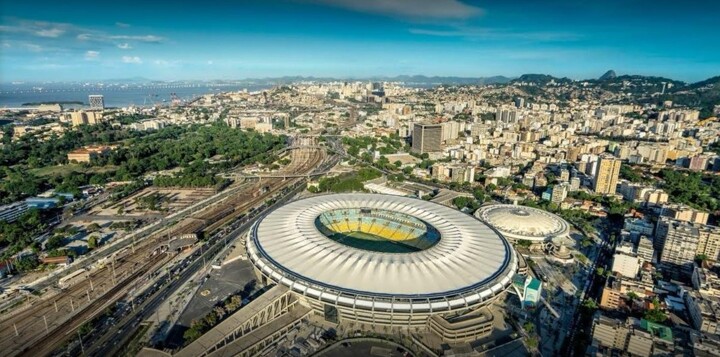
On 14 June 2018, CBF Vice President Fernando Sarney announced that five cities will host the tournament: Salvador, Rio de Janeiro, São Paulo, Belo Horizonte and Porto Alegre. The list of stadia was decided on 17 September 2018.
The opening match will be held at the Estádio do Morumbi in São Paulo, the semi-finals will be held at the Arena do Grêmio in Porto Alegre and Estádio Mineirão in Belo Horizonte, and the final will be held at the Estádio do Maracanã in Rio de Janeiro.
On 23 November 2018, CONMEBOL announced that the second São Paulo venue would be changed from the Allianz Parque to Arena Corinthians.
Maracanã Stadium
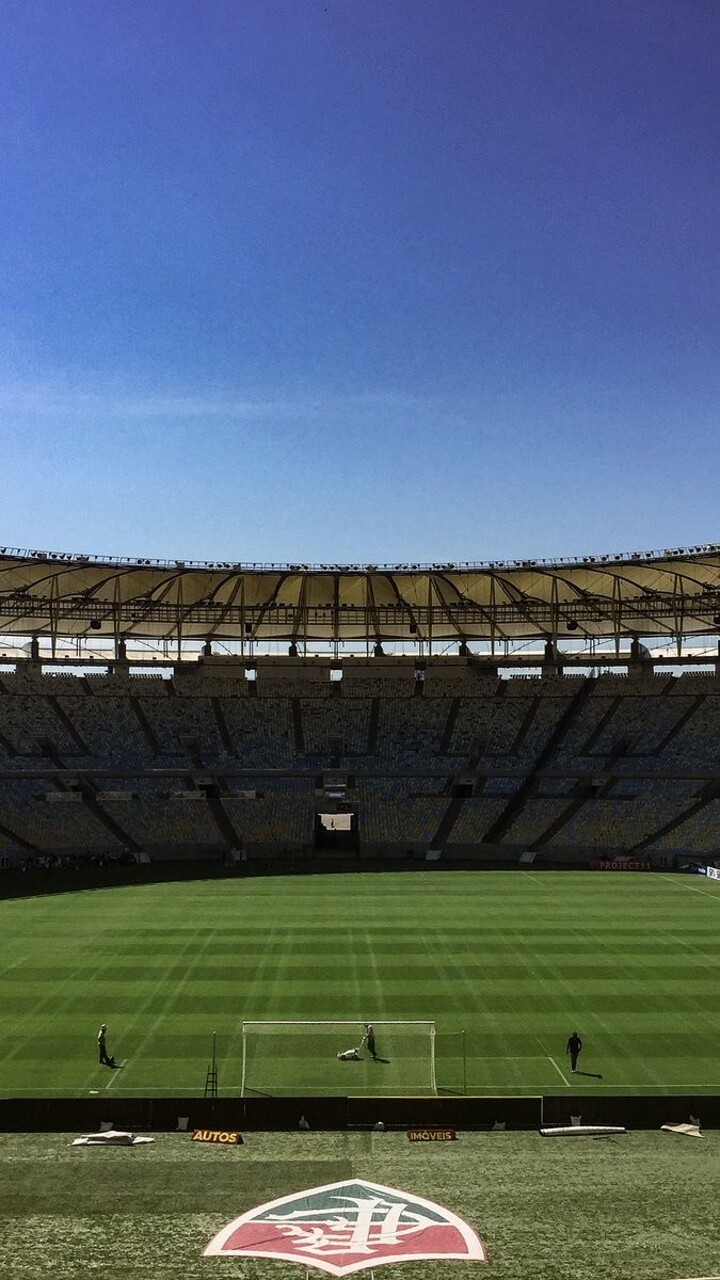
The Maracanã, officially Estádio Jornalista Mário Filho, is a football stadium in Rio de Janeiro. The stadium is part of a complex that includes an arena known by the name of Maracanãzinho, which means "The Little Maracanã" in Portuguese. Owned by the Rio de Janeiro state government, it is, as is the Maracanã neighborhood where it is located, named after the Rio Maracanã, a now canalized river in Rio de Janeiro.
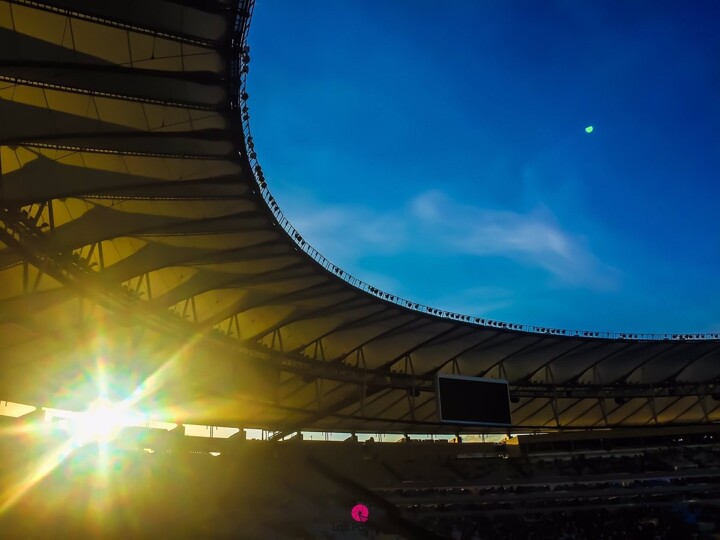
The stadium was opened in 1950 to host the FIFA World Cup, in which Brazil was beaten 2–1 by Uruguay in the deciding game, in front of 199,854 spectators on 16 July 1950. The venue has seen attendances of 150,000 or more at 26 occasions, the last being on 29 May 1983, as 155,253 spectators watched Flamengo beat Santos 3-0.
The stadium has seen crowds of more than 100,000 284 times. But as terraced sections have been replaced with seats over time, and after the renovation for the 2014 FIFA World Cup, its original capacity has been reduced to the current 78,838, but it remains the largest stadium in Brazil.
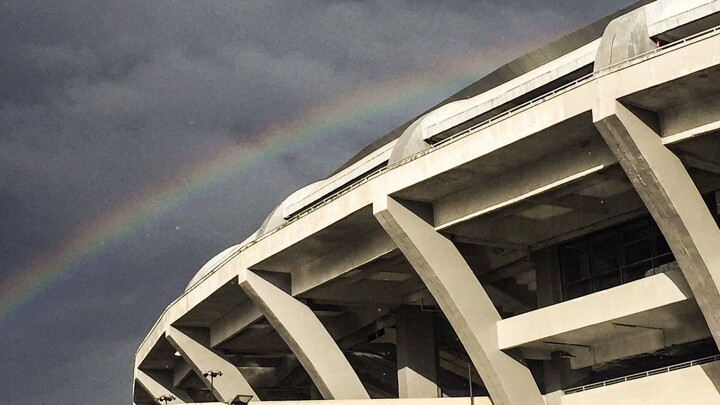
It is mainly used for football matches between the major football clubs in Rio de Janeiro, including Flamengo, Fluminense, Botafogo, and Vasco da Gama. It has also hosted a number of concerts and other sporting events.
The total attendance at the last (and indeed decisive game, but not a final) game of the 1950 World Cup was 199,854, making it the world's largest stadium by capacity when it was inaugurated.
After its 2010–13 renovation, the rebuilt stadium currently seats 78,838 spectators, making it the largest stadium in Brazil and the second in South America after Estadio Monumental in Peru.
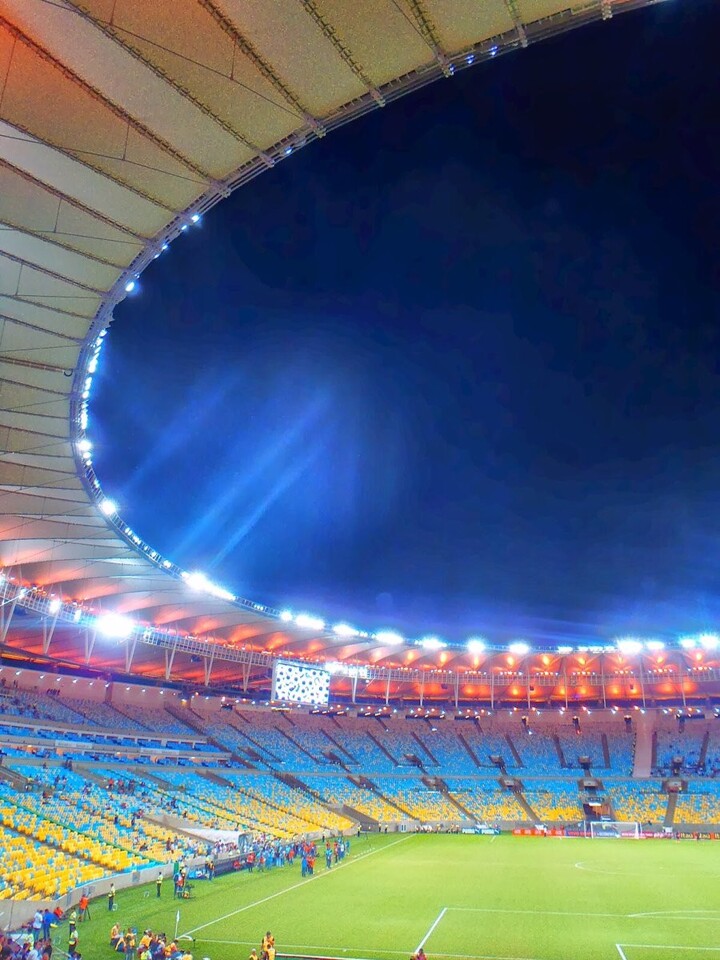
It was the main venue of the 2007 Pan American Games, hosting the football tournament and the opening and closing ceremonies.
The Maracanã was partially rebuilt in preparation for the 2013 FIFA Confederations Cup, and the 2014 World Cup, for which it hosted several matches, including the final.
It also served as the venue for the opening and closing ceremonies of the 2016 Summer Olympics and Paralympics, with the main track and field events taking place at the Estádio Olímpico.
Estádio do Morumbi
The Estádio Cícero Pompeu de Toledo, widely known as Morumbi, is a football stadium located in the Morumbi district in São Paulo, Brazil.
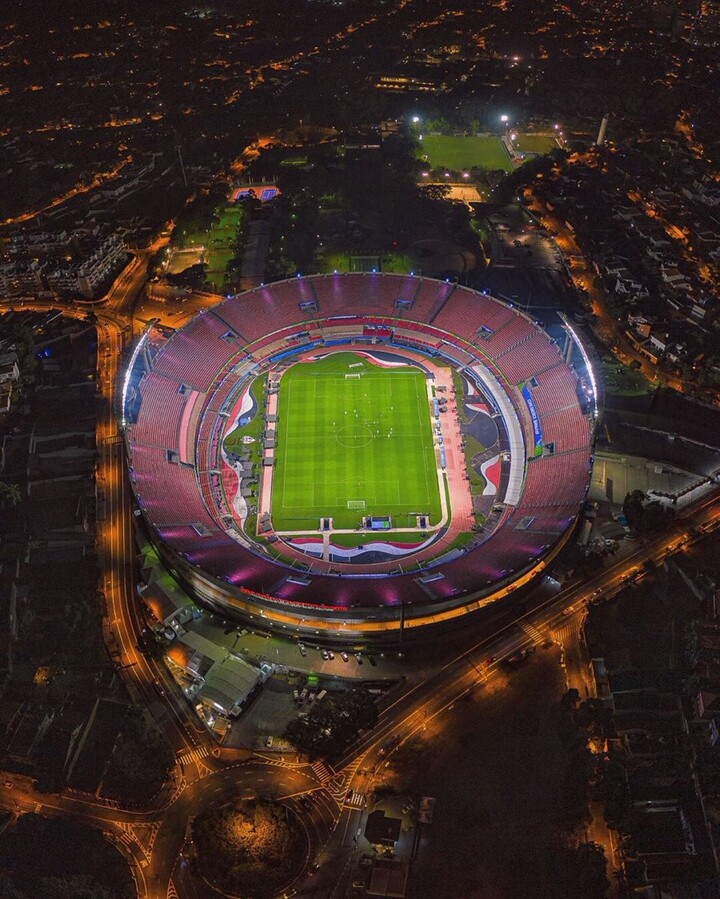
It is the home of São Paulo Futebol Clube and its formal name honors Cícero Pompeu de Toledo, who was São Paulo Futebol Clube's chairman during most of the stadium construction and died before its inauguration.
Morumbi is the largest privately owned stadium in Brazil. The stadium was designed by the architect João Batista Vilanova Artigas.
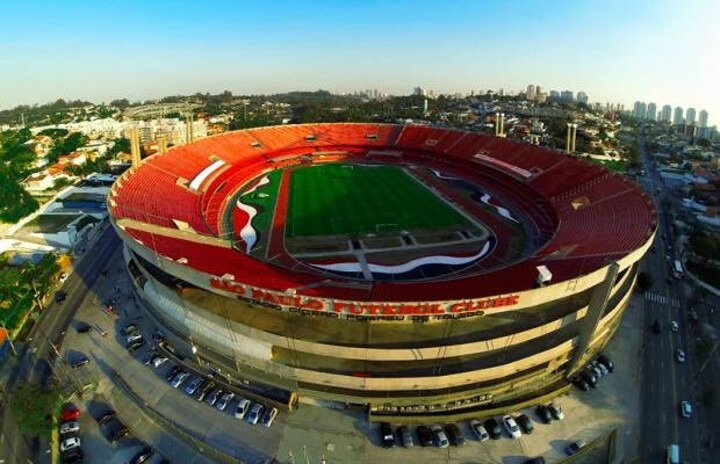
Arena Corinthians
The Arena Corinthians is a sports stadium located in São Paulo, Brazil and owned, operated, and used by Sport Club Corinthians Paulista.

It has a seating capacity of 49,205, making it the fifth-largest stadium used by teams in the top tier of the Brazilian League and the eleventh-largest in Brazil.
It hosted six matches during the 2014 FIFA World Cup, including the opening match on 12 June 2014. Because of a requirement for it to have at least 65,000 seats for the World Cup opening match, temporary seats were added to the stadium for the tournament. The temporary seats started to be removed shortly after its last World Cup match.
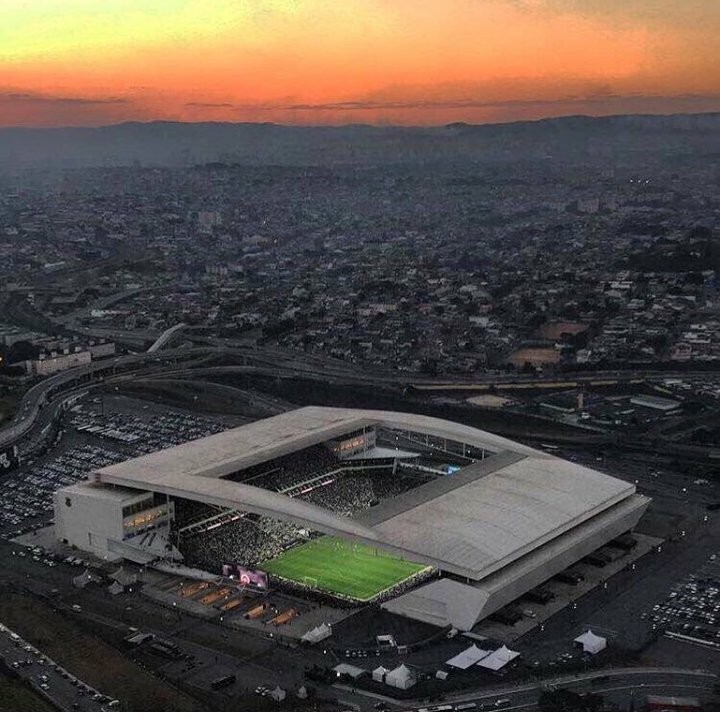
In 2016, a scandal arose, when Emílio Odebrecht stated that the stadium was only built because former president Lula asked for it and the stadium was built as a "gift" for him, during Lula's and Dilma's governments. Under PT governments from 2003 to 2015, the Odebrecht group's revenues jumped from 17 to 132 billion.
Estádio Mineirão
Mineirão, officially Estádio Governador Magalhães Pinto (Governor Magalhães Pinto Stadium) is the largest football stadium in the state of Minas Gerais. It was established in 1965, and it is located in Belo Horizonte.
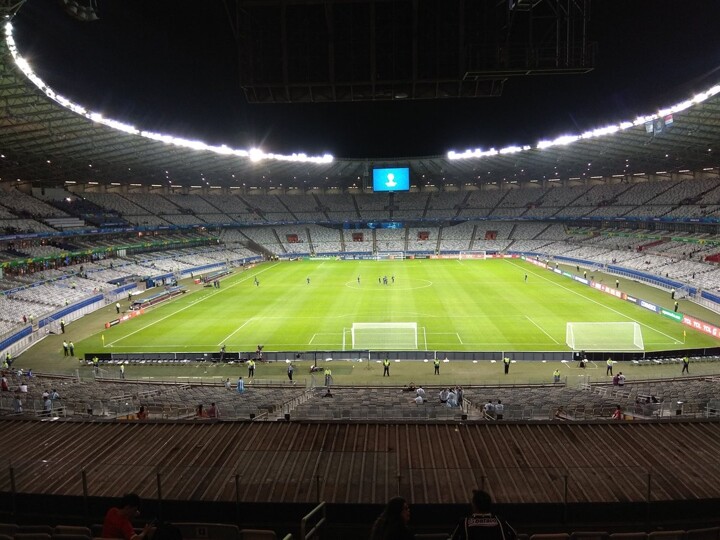
It served as a venue in the 2013 FIFA Confederations Cup and the 2014 FIFA World Cup. It also hosted some matches of the football tournament of the 2016 Summer Olympics.
The stadium has a seating capacity of 61,846 spectators. The property of the state of Minas Gerais, it is used by Cruzeiro as its home, with Atlético Mineiro playing some matches in it as well.
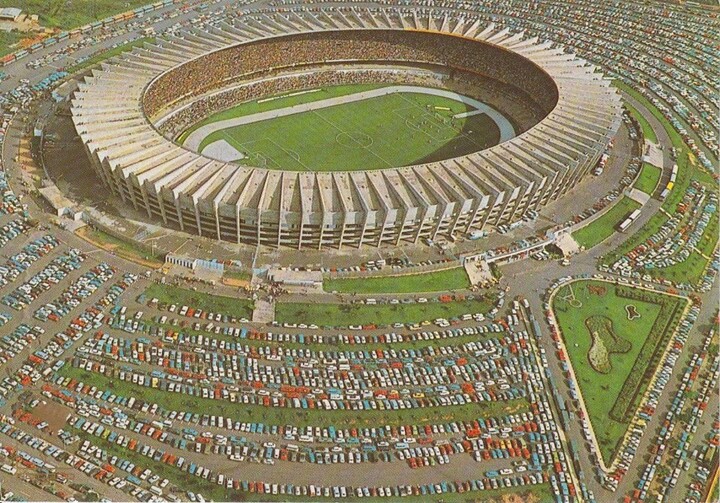
Arena do Grêmio
Arena do Grêmio is a multi-use stadium in Porto Alegre, Rio Grande do Sul. It was inaugurated on December 8, 2012.

It is used mostly for football matches and as the home stadium of Grêmio, replacing the Estádio Olímpico Monumental.
With a 60,540 capacity (55,662 current official capacity), the stadium is one of the most modern venues in South America.
Itaipava Arena Fonte Nova
The Itaipava Arena Fonte Nova, also known as Complexo Esportivo Cultural Professor Octávio Mangabeira, is a football-specific stadium located in Salvador, Bahia, Brazil, and has a maximum capacity of 48,000 people. The stadium was built in place of the older Estádio Fonte Nova.
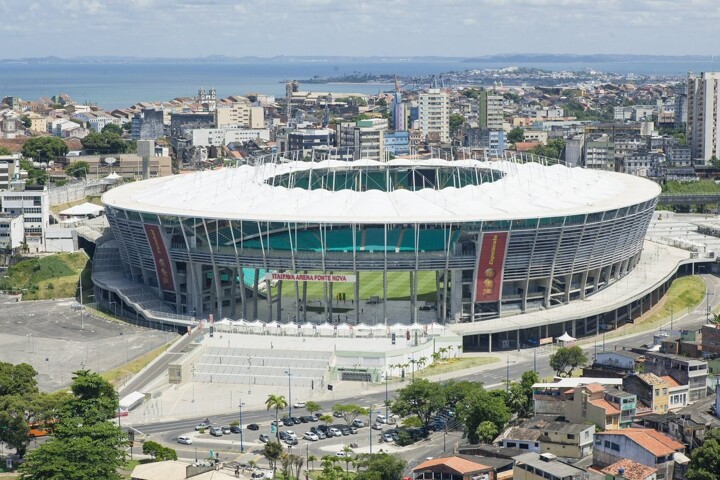
The stadium was first used for the 2013 FIFA Confederations Cup and the subsequent 2014 FIFA World Cup, including the 5-1 win of The Netherlands over reigning World Champions Spain. It was used as one of the venues for the football competition of the 2016 Summer Olympics.
A group of architects from Brunswick, Germany, which also redesigned the old Hanover stadium into a modern arena for the 2006 Cup, was selected after bidding.
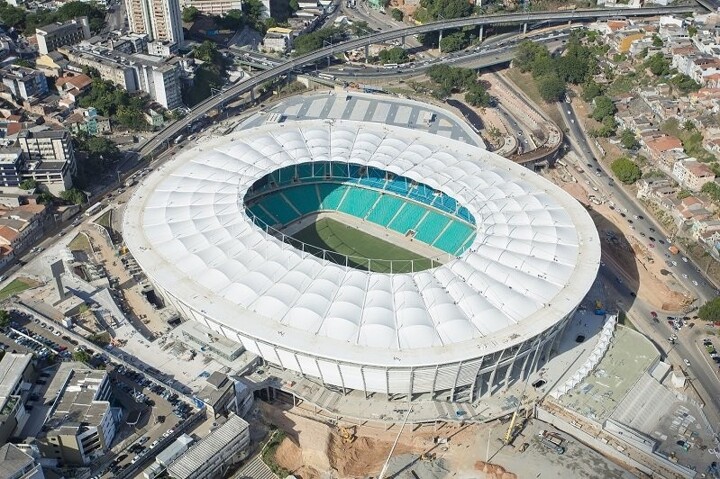
Since 2013, the brewery Itaipava from Grupo Petrópolis has the naming rights of the arena "Itaipava Arena Fonte Nova" under a sponsorship agreement until the year 2023, amounting to $100m. This was the first naming rights agreement signed for the 2014 World Cup stadiums.
The stadium was inaugurated on April 7, 2013, with a Campeonato Baiano game in which Vitória defeated Bahia 5-1. The first player to score a goal in the stadium was Vitória's Renato Cajá. During this match, some supporters were unable to see the game completely due to some blind spots.
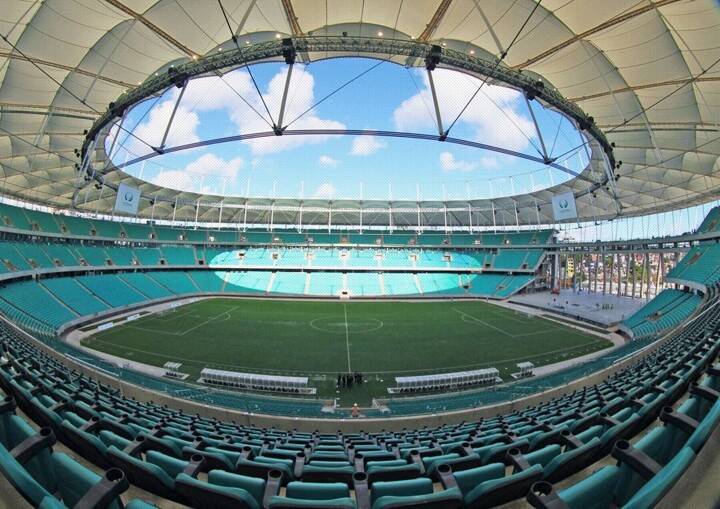
The stadium had excessive dust and some puddles. The company responsible for the stadium, owned by Grupo OAS and Odebrecht, said it was aware of the problems.
On May 27, 2013 a section of the roof collapsed after heavy rain.
